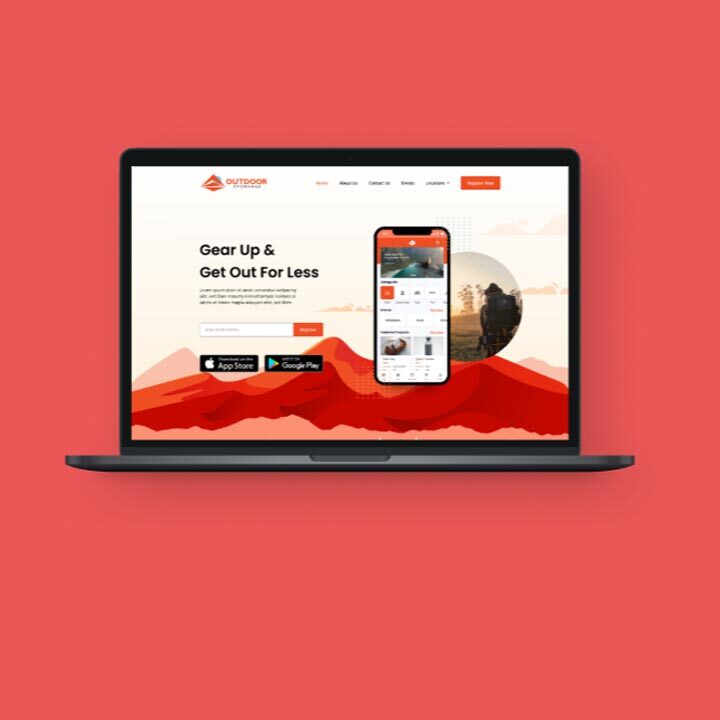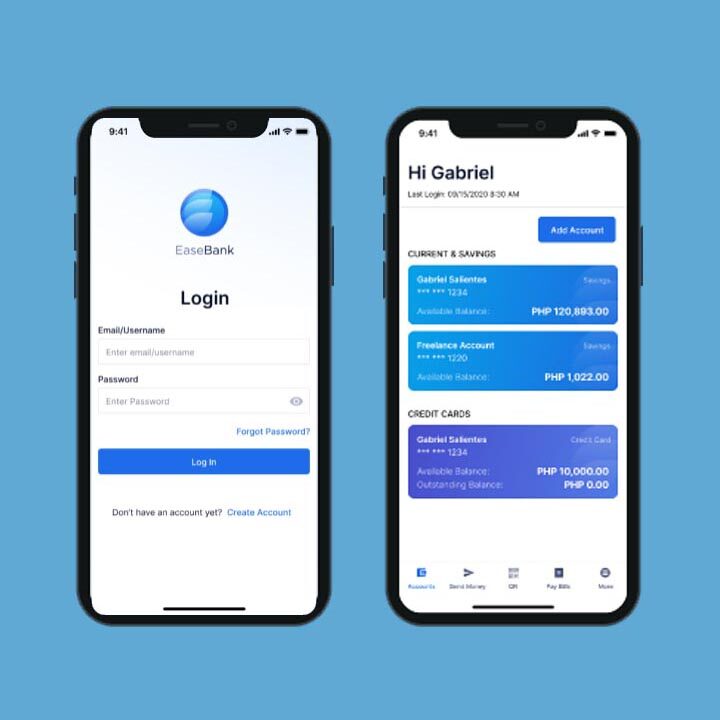Web development process and key elements
A well-designed and functional website is a powerful tool that can help you reach your target audience, showcase your products or services, and ultimately drive conversions. Web development plays a pivotal role in creating websites that not only attract visitors but also provide them with a seamless browsing experience.
A professionally developed website instills trust and credibility in your brand, making it more likely for visitors to engage with your content and convert into customers. It allows you to showcase your unique value proposition and differentiate yourself from the competition. Furthermore, a well-optimized website can also enhance your search engine rankings, increasing your visibility and driving organic traffic to your site.
When it comes to web development, investing in quality is key. Hiring a skilled web development team or partnering with a reputable agency can ensure that your website is built with the latest technologies and best practices in mind. By doing so, you can create a website that not only meets your business objectives but also exceeds the expectations of your target audience.


Choosing the right web development framework
Web development is a complex process that involves several stages, from planning and design to development and deployment. Each stage requires careful attention to detail and collaboration between designers, developers, and other stakeholders. Let’s take a closer look at the key elements of the web development process.
1. Planning: This stage involves defining the website’s objectives, target audience, and desired functionality. It includes conducting market research, competitor analysis, and creating a sitemap to outline the website’s structure.
2. Design: In this stage, designers create wireframes and mockups to visualize the website’s layout and user interface. The design should be aesthetically pleasing, intuitive to navigate, and aligned with your brand identity.
3. Development: Once the design is approved, developers start coding the website using programming languages such as HTML, CSS, and JavaScript.
4. Content Creation: Content is a crucial aspect of web development. It includes written copy, images, videos, and other multimedia elements that communicate your brand message effectively. High-quality content helps engage visitors and encourages them to take action.
5. Testing: Before the website goes live, thorough testing is essential to identify and fix any bugs or issues. This includes checking for compatibility across different browsers and devices, as well as testing the website’s functionality and performance.
6. Deployment: Once the website has undergone rigorous testing and meets all the requirements, it is ready for deployment. This involves transferring the website files to a web server and configuring the necessary settings to make the website accessible to users.
7. Maintenance: Web development is an ongoing process. Regular maintenance and updates are necessary to ensure that the website remains secure, performs optimally, and adapts to changing user needs and technological advancements.
Choosing the right web development framework is also crucial for building a successful website. Frameworks like WordPress, Drupal, and Joomla provide a solid foundation and offer a wide range of features and plugins to enhance your website’s functionality. It’s important to consider factors such as scalability, community support, and ease of use when selecting a framework that aligns with your business requirements.


Best practices for responsive web design
In today’s mobile-dominated world, responsive web design has become a necessity rather than a luxury. With an increasing number of users accessing websites on smartphones and tablets, it’s vital to create a seamless browsing experience across different devices and screen sizes.
1. Mobile-first approach: Start by designing for mobile devices and then scale up for larger screens. This ensures that your website looks and functions well on smaller screens, where space is limited.
2. Flexible grid layout: Use a flexible grid system that allows content to adapt to different screen sizes. This helps maintain the website’s structure and readability across devices.
3. Media queries: Use CSS media queries to apply different styles based on the device’s screen size and orientation. This enables you to customize the website’s layout and optimize the user experience for each device.
4. Optimized images: Images play a crucial role in web design, but they can also slow down page load times. Optimize images by compressing them without compromising quality, and consider using modern image formats like WebP for better performance.
5. Touch-friendly navigation: Design intuitive and easy-to-use navigation menus that are touch-friendly. This includes using larger buttons and ensuring sufficient spacing between clickable elements.
6. Performance optimization: Pay attention to website performance by minimizing HTTP requests, leveraging browser caching, and optimizing code and assets. Fast-loading websites not only improve the user experience but also contribute to better search engine rankings.
By implementing these best practices, you can create a responsive website that delivers a consistent and engaging experience across devices, ultimately increasing user satisfaction and conversions.
Optimizing website performance for better user experience
Website performance plays a crucial role in delivering a positive user experience. If your website takes too long to load, visitors are likely to abandon it and seek alternatives. Here are some tips to optimize your website’s performance:
1. Minimize HTTP requests: Reduce the number of HTTP requests by combining CSS and JavaScript files, using CSS sprites, and optimizing images. Each HTTP request adds latency, so minimizing them can significantly improve page load times.
2. Leverage browser caching: Enable browser caching to store static resources like images, CSS, and JavaScript files on the user’s device. This reduces the need for repeated requests, resulting in faster subsequent page loads.
3. Optimize code and assets: Minify CSS and JavaScript files by removing unnecessary characters, whitespace, and comments. Compress images without sacrificing quality.
4. Use content delivery networks (CDNs): CDNs distribute your website’s static assets across multiple servers worldwide.
5. Implement lazy loading: Lazy loading is a technique that defers the loading of non-critical resources, such as images below the fold, until the user scrolls to them.
6. Regularly monitor and optimize: Continuously monitor your website’s performance using tools like Google PageSpeed Insights or GTmetrix. Identify bottlenecks and areas for improvement, and take necessary steps to optimize your website’s speed and performance.
By optimizing your website’s performance, you can provide visitors with a seamless and fast browsing experience, keeping them engaged and more likely to convert.


Incorporating SEO into web development
When done right, SEO can help your website rank higher in search engine results pages (SERPs), increasing your chances of attracting and converting potential customers. Here are some key considerations for incorporating SEO into web development:
1. On-page optimization: Optimize your website’s on-page elements, including meta tags, headings, URLs, and content, to align with your target keywords.
2. Site speed optimization: Page load speed is a crucial ranking factor. Optimize your website’s performance by following the best practices mentioned earlier. Fast-loading websites not only improve user experience but also tend to rank higher in search results.
3. Mobile optimization: With the mobile-first indexing approach adopted by search engines, it’s crucial to have a mobile-friendly website.
4. Building Links: This can be achieved through content marketing, guest blogging, influencer outreach, and other link-building strategies.
5. Content optimization: Create high-quality, informative, and engaging content that addresses the needs and interests of your target audience.
Remember that SEO is an ongoing process. Regularly monitor your website’s performance, track keyword rankings, and adapt your SEO strategy based on industry trends and algorithm updates. By incorporating SEO into your web development process, you can enhance your website’s visibility, attract more organic traffic, and ultimately boost your online success.
UI/UX
User interface (UI) and user experience (UX) are two critical aspects of web development that can make or break your website’s success. UI refers to the visual elements and design principles that users interact with, while UX focuses on the overall experience users have when navigating and using your website. Here are some key considerations for UI and UX in web development:
1. Intuitive navigation: Design a clear and intuitive navigation menu that allows users to easily find the information they are looking for. Use logical grouping, descriptive labels, and visual cues to guide users through your website.
2. Consistent branding: Maintain consistent branding throughout your website, including colors, typography, and imagery. This helps create a cohesive and recognizable brand identity, enhancing user trust and familiarity.
3. Whitespace and layout: Use whitespace strategically to improve readability and highlight important elements. A well-designed layout with ample spacing between content blocks improves visual hierarchy and enhances user comprehension.
4. Calls to action (CTAs): Place clear and compelling CTAs throughout your website to guide users towards desired actions, such as making a purchase or filling out a contact form.
5. Responsive design: Ensure that your website is responsive and adapts seamlessly to different devices and screen sizes.
6. User testing and feedback: Conduct user testing to gather feedback and identify pain points or areas for improvement. User feedback can provide valuable insights into how users interact with your website, helping you refine the UI and UX.
By prioritizing UI and UX in your web development process, you can create a website that not only looks visually appealing but also provides a seamless and enjoyable user experience. This, in turn, leads to increased engagement, higher conversions, and satisfied customers.
Web development trends to watch out for
Staying up to date with the latest trends can help you create websites that are modern, engaging, and aligned with user expectations. Here are some web development trends to watch out for:
1. Progressive Web Apps (PWAs): PWAs combine the best of both web and mobile applications, providing an app-like experience directly through the browser.
2. Single-page applications (SPAs): SPAs are web applications that load a single HTML page and dynamically update the content as users interact with the application. SPAs provide a smoother and more responsive user experience, similar to native applications.
3. Voice user interface (VUI): With the rise of voice-activated devices like smart speakers and virtual assistants, voice user interfaces are gaining popularity. Incorporating VUI into web development allows users to interact with websites through voice commands, providing a hands-free and convenient experience.
4. Chatbots and AI: Chatbots powered by artificial intelligence are becoming increasingly prevalent in web development. They can provide instant customer support, answer queries, and guide users through the website, enhancing the overall user experience.
5. Motion and animation: Motion and animation can add life and interactivity to your website. From subtle hover effects to complex animations, incorporating motion can engage users and make your website more memorable.
6. Dark mode: Dark mode, which features a dark color scheme, has gained popularity due to its aesthetic appeal and potential energy-saving benefits. Implementing dark mode in web development can cater to user preferences and provide a unique visual experience.
7. Accessibility: Making websites accessible to users with disabilities is of utmost importance. Web development trends emphasize the need for inclusive design, including features like alt text for images, proper heading structure, and keyboard navigation.
Remember that not all trends may be suitable for every website or business. It’s essential to evaluate the relevance and potential impact of each trend based on your target audience, industry, and business objectives.
Conclusion: The impact of web development on online success
Web development is an art form that combines creativity, technical expertise, and strategic thinking. A well-designed and optimized website has the power to attract, engage, and convert visitors into loyal customers. From responsive design and performance optimization to SEO and UI/UX, every aspect of web development plays a crucial role in achieving online success.
By understanding the importance of web development for businesses, following best practices, and staying updated with the latest trends, you can create websites that leave a lasting impression and drive tangible results. Remember that web development is an ongoing process, and continuous improvement is key to staying ahead in the ever-evolving digital landscape.
Contact us at info@digiglobalsolutions.com or submit a contact form here.







